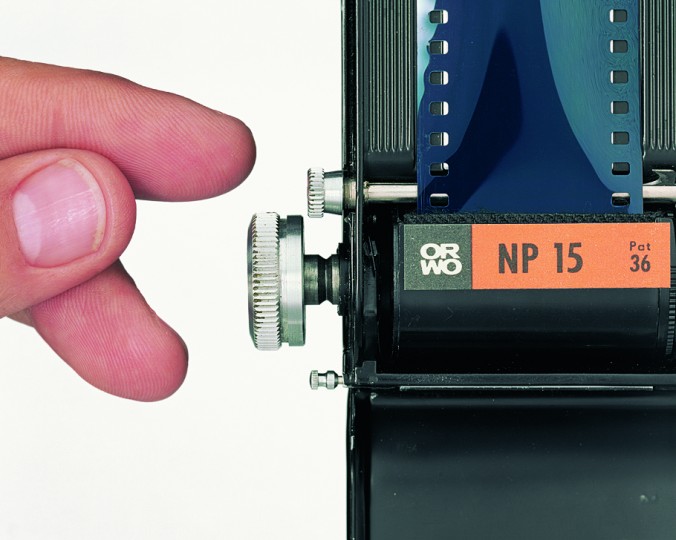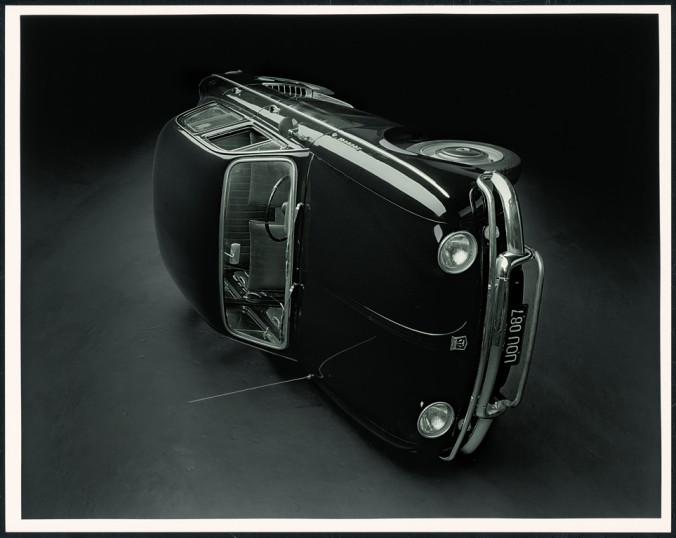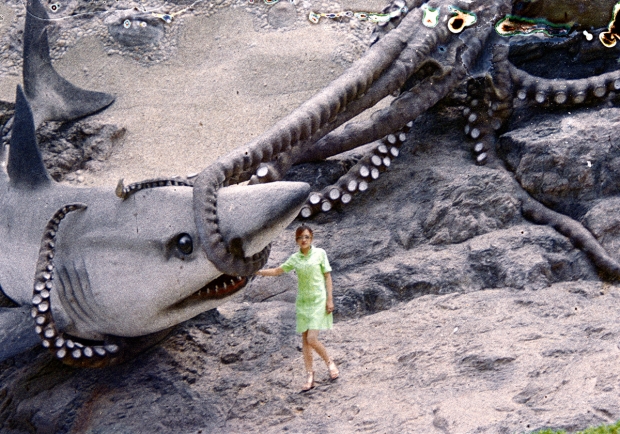Christopher Williams at the Art Institute of Chicago

Christopher Williams approaches his work from a director’s perspective. To bring his vision to life, he commissions large teams of creative artists from concept to execution. Inspired by nature, industry and the products of everyday life, he researches commercial imagery and its socio-political contexts, treating his images as installations that are redeployed in site-specific ways, as objects to be consumed. The Art Institute of Chicago (AIC) hosted his first museum showing ever in 1982. In a return to the scene of his initial public recognition, Williams’ work from throughout his 35-year career now spans three sets of galleries in the AIC. Photographs of corn, fruit and chocolate, a woman with shampooed hair wrapped in a towel, cars, old-school German cameras, and jellyfish sit beside photographs capturing imagery of popular culture and politics in the Cold War era and beyond.
Born in Los Angeles in 1956 and currently a professor of photography at the Kunstakademie, Dusseldorf, Williams is notoriously averse to explaining his work. However, in this first retrospective, he invites the audience to experience the full range of his artworks. In galleries wrapped in supermassive vinyl graphics of black letters on a bright, Kodak-yellow background, Williams masterfully weaves blatant simplicity with intellectual complexity by exploring themes such as colonialism and the Cold War’s impact on today’s society, and the Americanization of European culture. Behind shoots that feature commercial products in their glossy perfection and long, super-descriptive labels that highlight their commercial nature, such as stacks of Ritter Sport chocolate bars cleanly sliced to reveal their fillings in Ritter Sport… 2008, or a bunch of fiery-red apples in Bergische Bauernscheune… 2010 hides a camera strategy game — the “program.”
Williams adds a level of complication to work that at first glance resembles advertising photography. He challenges the idea of the camera as we know it by embracing the notion of “program” that Vilem Flusser first introduced in his 1983 book, Towards a Philosophy of Photography. “A camera is programmed to produce photographs — no matter the aspirations of its operator, he or she can only use it to produce what it is programmed to do,” argues Flusser, who later writes, “Photography is programmed by the photographic industry; the photographic industry is programmed by ‘the industrial complex,’ which is programmed by capitalism, et cetera.” The focus in Williams’ work shifts between these levels of programming. The camera has the power to either construct an ideal of beauty, glorifying its total syncretism and unstoppable polytheism, as Umberto Eco puts it in the History of Beauty, which considers Williams in depth. Or in the case of Williams’ Mustafa Kinte… 2008, the camera becomes a weapon. Kinte is an African man wearing the same type of Van Laack German-manufactured shirt in which artist Marcel Broodthaers posed for the company’s advertisement in Der Spiegel in 1971. Kinte, holding a camera, is smiling. It is another one of Williams’ mysteries, loaded with a deep political backstory, whether Kinte is posing ironically or smiling for a bright future of post-colonial independence and political liberation. Appearing “as an alter ego of a Conceptual Art fashion plate,” as Williams states, Kinte would have absolutely no reason to play dress up with the enemy and playfully smile at a camera that treats him as a marginalized subject recruited to the European version of the American Dream. Again, with Williams, there is no one right answer — viewers have to come up with many of their own.

Arranging his photographs in circular pattern groupings like constellations, the artist manages to disrupt any attempt to interpret the work along thematic lines. As soon as the viewer begins to think about the connections between certain images — those of sliced cameras for instance — a photograph that is completely disconnected intrudes to interrupt one’s chain of thought. “Bring an open mind and open senses,” said exhibition curator Matthew Witkovsky, who alerted viewers to think about the space of the museum in its entirety, with attention to details such as how other viewers move along the walls. He suggests, “Question everything. Question what you’re told. Question yourself.” By providing the necessary distance, Williams not only allows his work to occupy the space but also allows his audience to think, grow and interact with his ideas by critically considering the difference among photographic strategies.
The Production Line of Happiness features Williams’ major projects from the 1980s to the early 1990s and photographs from his subsequent magnum series For Example: Die Welt ist schön (The world is beautiful), 1993–2001 and For Example: Dix-huit leçons sur la société industrielle (Eighteen lessons on industrial society) 2003–present. For the title of this exhibition, the artist used a line from a documentary by French director Jean-Luc Godard, in which an amateur filmmaker compares his daily job as a factory worker with his hobby of editing films of the Swiss countryside as “the production line of happiness.” Attention to the slightest detail, reading between the lines and interpretation of the hidden meaning are implicit throughout Williams’ work, leaving the audience in a state of an extraordinary but very perplexed awakening and challenging the ways in which we consume photography.
Christopher Williams’ exhibition The Production Line of Happiness is co-organized by The Art Institute of Chicago, running Jan 25th-May 18th, 2014 and at The Museum of Modern Art, New York, Aug 2nd-Nov 2nd, 2014.







